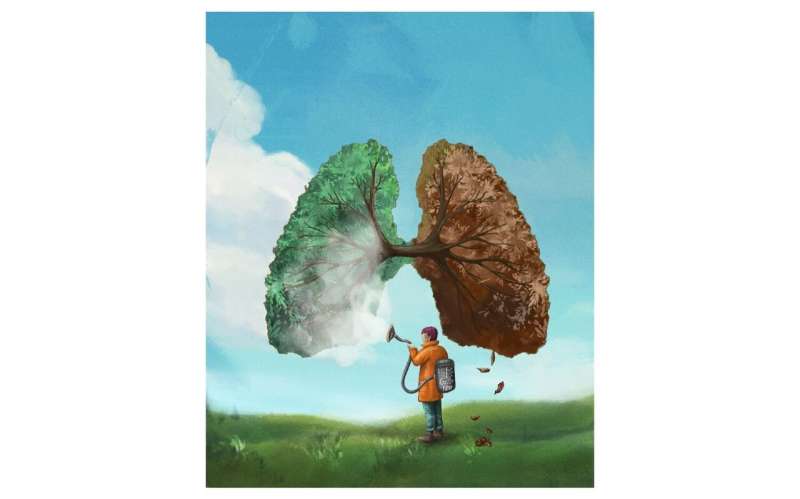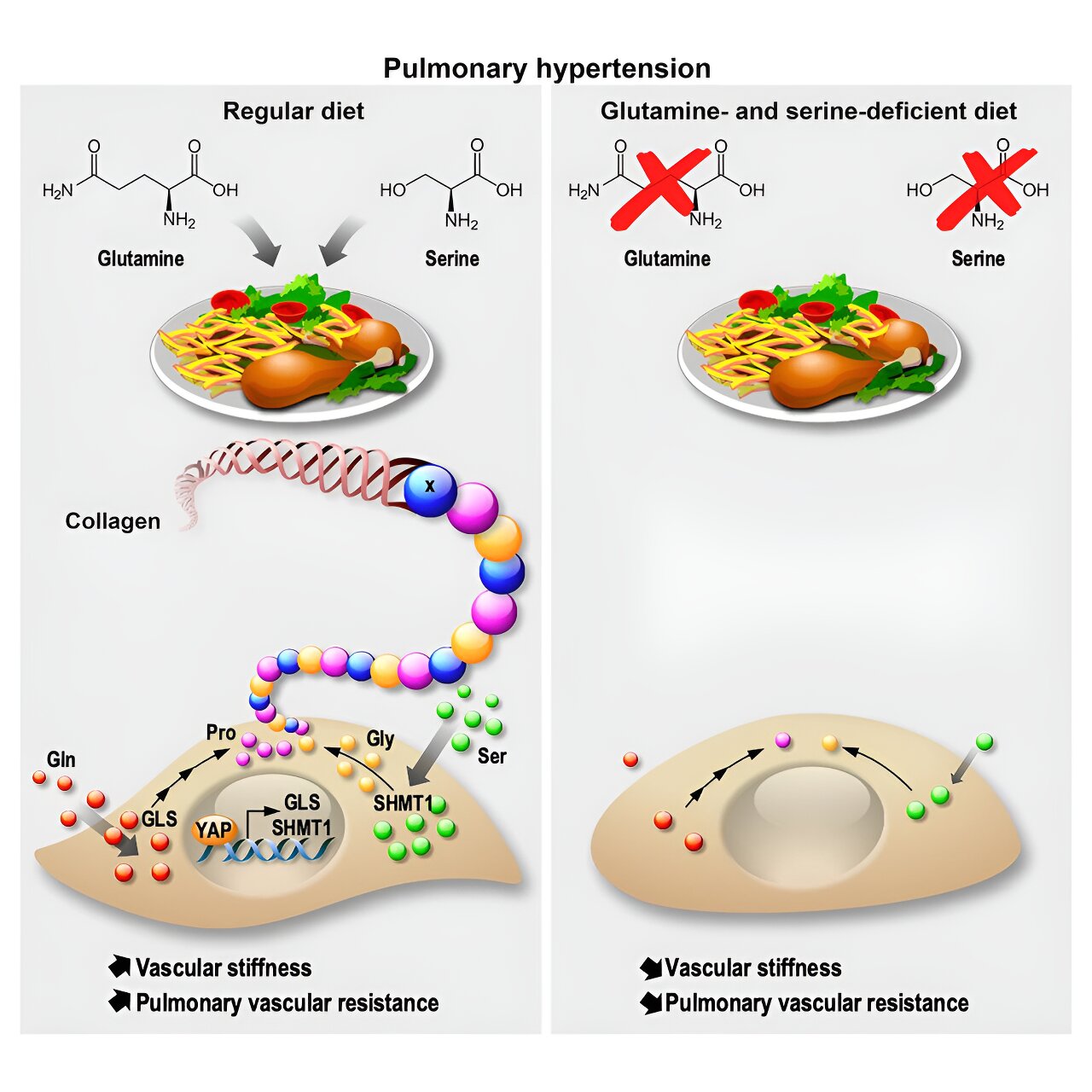br>
Blood vessels in the lungs aren’t like the others in the body. This difference becomes clear in pulmonary hypertension, in which only the lungs’ blood vessels stiffen progressively, leading to chronic lung disease, heart failure and death.
The underlying reasons for this organ-specific vessel stiffening remained a mystery until University of Pittsburgh researcher Stephen Chan and colleagues made a surprising discovery about these blood vessel cells in patients with pulmonary hypertension—they’re hungry.
Chan, Vitalant Chair in Vascular Medicine and Professor of Medicine in the Division of Cardiology at the University of Pittsburgh, and his team collaborated with the team of Thomas Bertero at the Université Côte d’Azur in France.
They found that hypertensive pulmonary blood vessel cells have a voracious appetite for two amino acids, glutamine and serine, and—as happens with any unbalanced diet—there are consequences. This metabolism of glutamine and serine is a key driver of pulmonary hypertension disease progression.
The findings were published May 2 in the journal Cell Metabolism.
Amino acids are the building blocks of proteins, which help build cellular structures, carry out biological functions, and regulate tissue and organ function. As hypertensive pulmonary blood vessels metabolize glutamine and serine, they create two new amino acids, called proline and glycine.
Proline and glycine are the primary building blocks of collagen protein, which makes up 30% of our body’s total protein and provides a structural framework for our skin, muscles, bones and connective tissues.

The appetite for glutamine and serine and the resulting elevated levels of proline and glycine in hypertensive pulmonary blood vessel cells drive the overproduction of collagen, which leads to vessel stiffening and impaired function—the hallmark feature of pulmonary hypertension.
Using rodent models for the disease, the researchers saw that drugs that limit cellular uptake of glutamine and serine deprived hypertensive pulmonary blood vessels of their craving.
In turn, the lack of cellular glutamine and serine metabolism halted the excess production of collagen building blocks and collagen production. Knowing amino acids are most often absorbed through our diets, the team also discovered that reducing the dietary intake of glutamine- and serine-rich foods helped reduce collagen overproduction.
“For the first time, we have a dietary maneuver that may serve as an effective therapy for the disease,” says Chan, who also directs the Vascular Medicine Institute and Center for Pulmonary Vascular Biology and Medicine at the University of Pittsburgh School of Medicine and UPMC.
For patients with pulmonary hypertension, avoiding foods rich in serine and glutamine, or eating foods with these amino acids depleted, might bolster the effectiveness of current medications.
“It opens up a new way that we could treat this disease, because now—instead of just relying on medications and transplantation—there are possibly effective lifestyle interventions,” says Chan.
Chan’s team also harnessed the characteristic appetite of these cells to create a new diagnostic test for pulmonary hypertension using positron emission tomography (PET) scan technology and a glutamine imaging tracer. The imaging tracer acts like a GPS monitor to track where glutamine goes in the body.
As a result, cells hungry for the amino acid light up on the PET scan, and the intensity of that light shows how ravenous cells are for glutamine and where those cells are in the body. This screening will enable earlier disease diagnosis and implementation of lifestyle and pharmacological interventions and allow doctors to check the efficacy of medications in slowing disease progression.
More information:
Nesrine S. Rachedi et al, Dietary intake and glutamine-serine metabolism control pathologic vascular stiffness, Cell Metabolism (2024). DOI: 10.1016/j.cmet.2024.04.010
Citation:
Dietary changes may help treat pulmonary hypertension (2024, May 2)
retrieved 3 May 2024
from
This document is subject to copyright. Apart from any fair dealing for the purpose of private study or research, no
part may be reproduced without the written permission. The content is provided for information purposes only.
